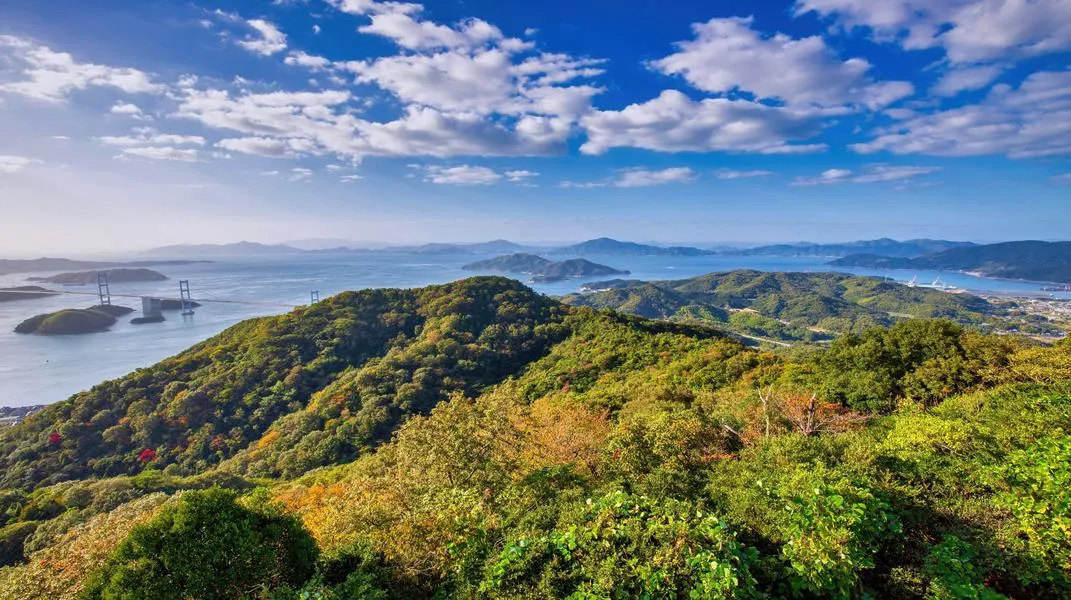Exploring Shikoku: Japan’s Enchanting Island of Serenity
Nestled between the Pacific Ocean and the Seto Inland Sea, the island of Shikoku is Japan's smallest and least populated main island. Despite its size, Shikoku boasts a rich tapestry of natural beauty, cultural heritage, and spiritual significance. With its picturesque landscapes, historic temples, and vibrant local traditions, Shikoku offers a unique experience for travelers seeking both adventure and tranquility. This article will introduce you to the enchanting attractions of Shikoku and provide essential tips and materials to ensure you make the most of your visit.

An Overview of Shikoku
Shikoku is divided into four prefectures: Kagawa, Ehime, Tokushima, and Kochi. Each region has its own distinct character, attractions, and culinary specialties. The island is perhaps best known for the Shikoku Pilgrimage, a 1,200-kilometer route that connects 88 Buddhist temples. This pilgrimage, which takes about 30 to 60 days to complete on foot, attracts both pilgrims and tourists, highlighting the island's spiritual connection.
Natural Wonders
Shikoku is renowned for its breathtaking landscapes, from rugged mountains to serene coastlines. The island's diverse topography is perfect for outdoor enthusiasts and nature lovers.
1. Iya Valley
One of Shikoku’s most stunning regions is the Iya Valley, known for its dramatic gorges and steep mountain terrain. Visitors can experience the breathtaking beauty of the valley by hiking along the trails, including the famous vine bridge, Kazurabashi, which sways high above the river. The valley is also home to hidden hot springs, traditional thatched-roof farmhouses, and picturesque rice terraces, providing a glimpse into rural Japanese life.
2. Shimanami Kaido
For cyclists and adventure seekers, the Shimanami Kaido is a must-visit. This 70-kilometer cycling route connects Shikoku and Honshu, the main island of Japan, via a series of bridges that span the Seto Inland Sea. Along the way, cyclists can enjoy panoramic views of the ocean, charming islands, and local art installations. The route is well-marked and offers bike rentals at various points, making it accessible for both experienced cyclists and casual riders.
3. Cape Ashizuri
Cape Ashizuri, located in Kochi Prefecture, is famous for its dramatic cliffs and breathtaking ocean views. The area is part of Ashizuri-Uwakai National Park and is home to the Ashizuri Lighthouse, which offers panoramic views of the Pacific Ocean. The surrounding coastal trails offer opportunities for hiking and exploring unique rock formations, making it a perfect spot for nature lovers.
Cultural Highlights
Shikoku is steeped in history and culture, offering visitors a chance to immerse themselves in Japan's rich traditions.
1. The Shikoku Pilgrimage
As mentioned earlier, the Shikoku Pilgrimage is one of the island's most significant attractions. The pilgrimage route is dotted with 88 temples, each with its own unique history and significance. Many pilgrims wear traditional white garments and carry a walking stick, embodying the spirit of the journey. Even if you’re not up for the full pilgrimage, visiting a few of these temples, such as the famous Ryozenji (the first temple) and Okubo-ji (the last temple), can provide a profound spiritual experience.
2. Matsuyama Castle
Matsuyama Castle, perched on a hill overlooking the city of Matsuyama, is one of Japan's twelve remaining original castles. Built in the early 1600s, the castle offers visitors a glimpse into Japan’s feudal past. The surrounding park is a popular cherry blossom viewing spot in spring, making it a picturesque destination year-round. Visitors can explore the castle grounds, enjoy exhibits on its history, and take in sweeping views of the city and the sea.
3. Dogo Onsen
Dogo Onsen is one of Japan’s oldest hot springs and is said to have inspired the bathhouse in Hayao Miyazaki’s animated film "Spirited Away." The main building, with its elegant wooden architecture, is a national cultural landmark. Visitors can relax in the mineral-rich waters, enjoy traditional ryokan accommodations, and experience the rituals of Japanese onsen culture. The nearby Dogo Onsen Honkan also features a small museum that explores the history of the bathhouse and the area.
Culinary Delights
Shikoku’s culinary scene is a treasure trove of flavors, with each prefecture offering its own specialties.
1. Sanuki Udon (Kagawa)
Kagawa Prefecture is famous for its udon noodles, known as Sanuki udon, which are characterized by their thick and chewy texture. There are countless udon shops throughout the region, each with its own unique twist on this beloved dish. Visitors can enjoy fresh udon served with various toppings, such as tempura, green onions, and a rich soy sauce broth.
2. Katsuo no Tataki (Kochi)
In Kochi, don’t miss the chance to try katsuo no tataki, a dish made from lightly seared bonito fish. The fish is usually served with garlic, green onions, and ponzu sauce, offering a delightful burst of flavors. Many local restaurants serve this dish with a side of fresh vegetables and rice, making for a satisfying meal.
3. Shikoku Citrus
Shikoku is also known for its citrus fruits, particularly yuzu and sudachi. These aromatic fruits are used in various dishes, drinks, and desserts. Be sure to sample yuzu-flavored sweets, drinks, and even sake during your visit.
Preparing for Your Visit
To make the most of your Shikoku experience, proper preparation is key. Here’s a comprehensive list of materials and tips to consider before your journey.
Essential Materials
- Travel Guidebook: A good travel guide can provide detailed information about the attractions, transportation, and cultural insights. Look for guides that focus specifically on Shikoku.
- Maps: While GPS and smartphone maps are handy, having a physical map can be beneficial, especially in rural areas where signals might be weak. Consider obtaining maps of the Shikoku Pilgrimage route if you plan to hike part of it.
- Accommodation Reservations: Depending on your itinerary, it’s wise to book accommodations in advance, especially during peak tourist seasons (spring and autumn). Consider staying in traditional ryokan for an authentic experience.
- Comfortable Footwear: Shikoku offers numerous hiking trails and temple visits, so comfortable walking shoes are essential. Ensure they are broken in to avoid blisters.
- Appropriate Clothing: The weather in Shikoku can vary greatly depending on the season. Layered clothing is advisable for spring and autumn, while lightweight, breathable fabrics are ideal for summer. Don’t forget a raincoat or umbrella, as the region can be rainy.
- Cash: While credit cards are accepted in many establishments, smaller shops, temples, and rural areas may only accept cash. It’s a good idea to carry yen for convenience.
- Pilgrimage Supplies: If you plan to embark on the Shikoku Pilgrimage, consider investing in a pilgrimage book, a walking stick, and traditional white attire (if you wish to experience the journey authentically).
- Travel Insurance: Ensure you have comprehensive travel insurance that covers health emergencies and trip cancellations.
Transportation
Shikoku is accessible via train, bus, and ferry. The Shikoku Railway Company operates trains connecting major cities, while local buses are available for reaching rural areas. Consider purchasing a rail pass for unlimited travel on JR trains within the region. Renting a car can also be convenient for exploring the island at your own pace, especially in more remote areas.
Language
While many people in Shikoku, particularly in tourism, can speak English, having a translation app or phrasebook can be helpful for communicating in more rural areas. Basic Japanese phrases can enhance your experience and help you connect with locals.
Conclusion
Shikoku is a captivating destination that offers a harmonious blend of nature, culture, and spirituality. Whether you’re exploring ancient temples, indulging in local cuisine, or hiking through stunning landscapes, the island promises an unforgettable experience. With proper preparation and an open heart, your visit to Shikoku will undoubtedly leave you with cherished memories and a deeper appreciation for Japan’s rich heritage.




